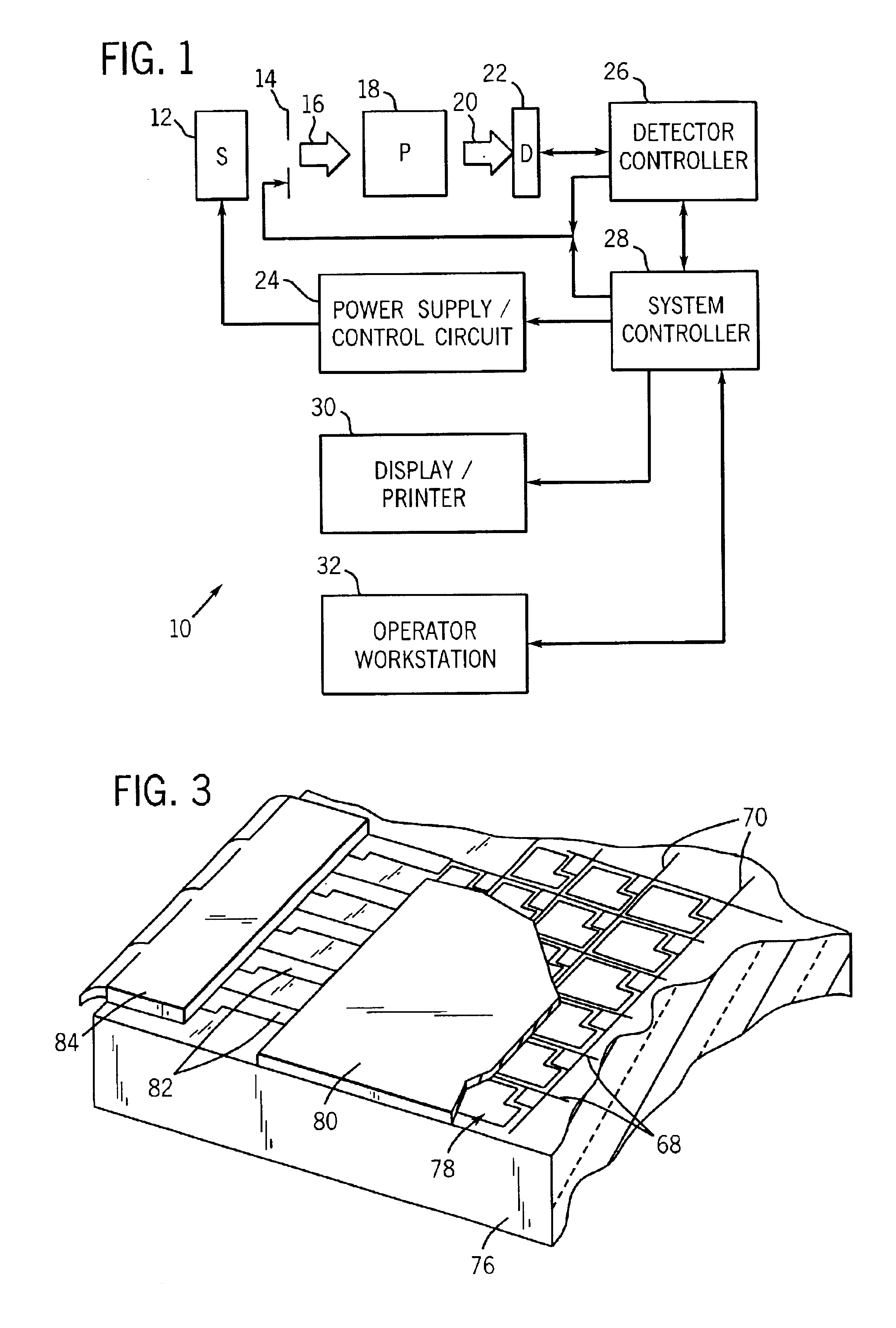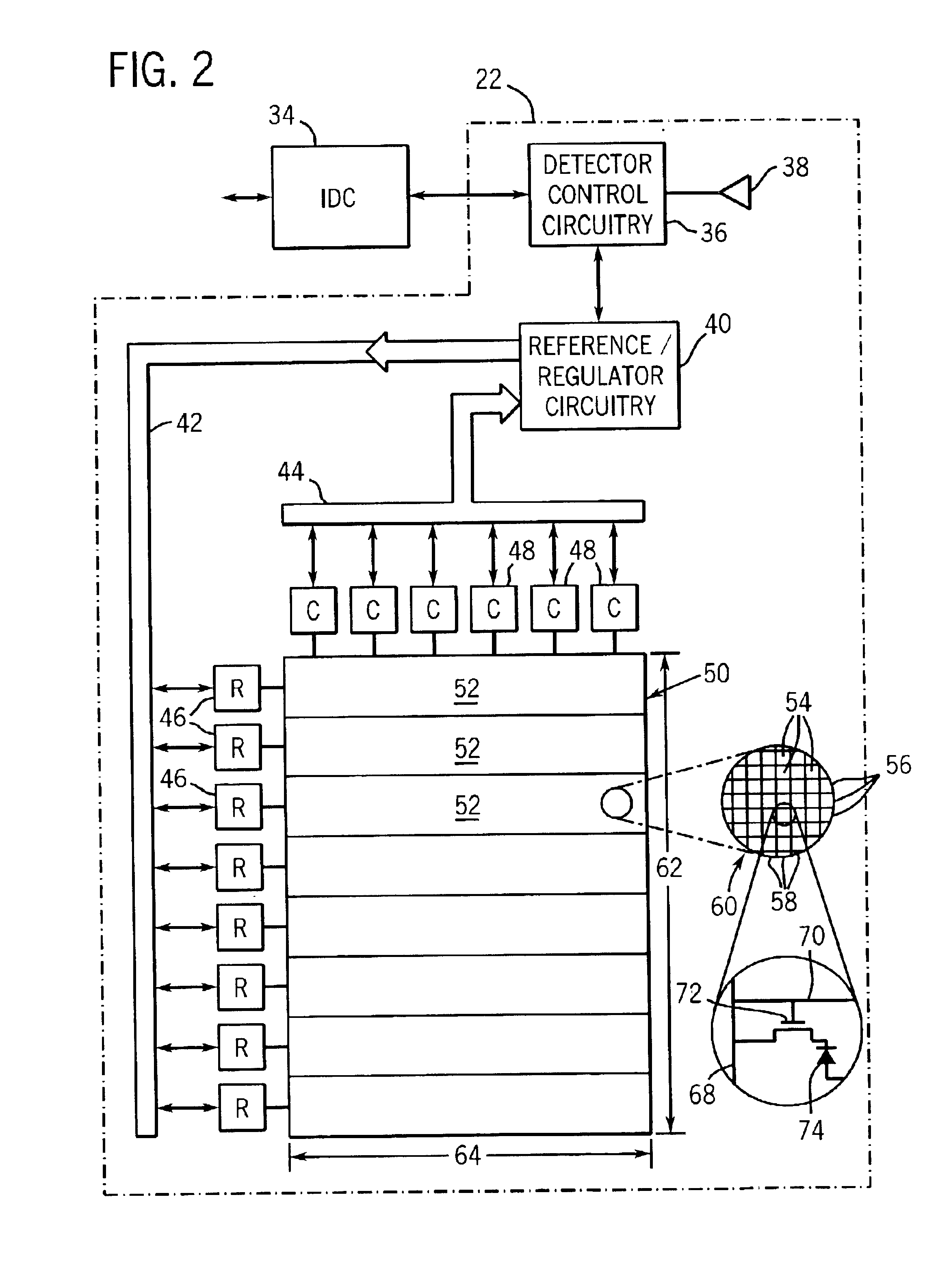Method and apparatus for selectively attenuating a radiation source
a radiation source and selective attenuation technology, applied in electrical equipment, nuclear engineering, diaphragm/collimeter handling, etc., can solve the problems of non-target tissue and even non-patients, inherently difficult to transmit between locations, non-target tissue near the target tissue may be unnecessarily exposed to the radiation stream,
- Summary
- Abstract
- Description
- Claims
- Application Information
AI Technical Summary
Benefits of technology
Problems solved by technology
Method used
Image
Examples
Embodiment Construction
[0030]FIG. 1 illustrates diagrammatically an imaging system 10 for acquiring and processing discrete pixel image data. In the illustrated embodiment, system 10 is a digital X-ray system designed both to acquire original image data, and to process the image data for display in accordance with the present technique. Though an X-ray system is described herein, the disclosed technique is equally applicable to attenuating other types of radiation streams in medical imaging and non-imaging contexts. For example, microwave, X-ray, gamma ray and other types of radiation employed in other commercial contexts, such as communications, food preparation and preservation, or scientific analysis, may utilize the techniques described below to provide selective attenuation.
[0031]In the embodiment illustrated in FIG. 1, imaging system 10 includes a source of X-ray radiation 12 positioned adjacent to a configurable collimator 14. Configurable collimator 14 selectively attenuates the flux intensity of ...
PUM
 Login to View More
Login to View More Abstract
Description
Claims
Application Information
 Login to View More
Login to View More - R&D
- Intellectual Property
- Life Sciences
- Materials
- Tech Scout
- Unparalleled Data Quality
- Higher Quality Content
- 60% Fewer Hallucinations
Browse by: Latest US Patents, China's latest patents, Technical Efficacy Thesaurus, Application Domain, Technology Topic, Popular Technical Reports.
© 2025 PatSnap. All rights reserved.Legal|Privacy policy|Modern Slavery Act Transparency Statement|Sitemap|About US| Contact US: help@patsnap.com



